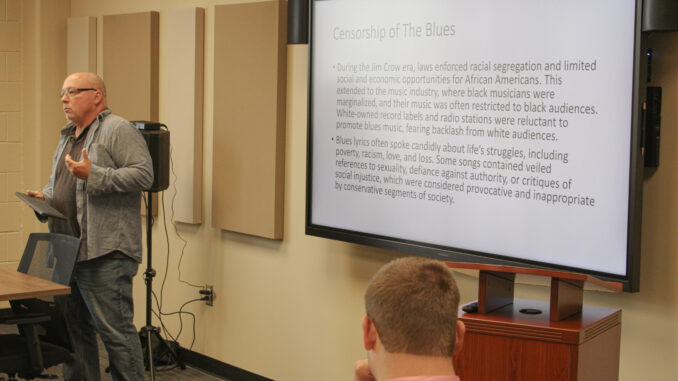
By Marianne Luedeman
Photos by Marianne Luedeman
BOILING SPRINGS, N.C. – Instructor of Communication Studies Jeff Powell recently hosted an edition of Freedom Reads that reviewed the history of banned music in the United States.
The event, which was held on Sept. 12, 2024, was a part of the library’s recurring Freedom Reads events. These events seek to educate students, faculty, staff and community members on the history of censorship in media and introduce them to historically censored media.
This session covered the history of music censorship in the United States as well as educated about the legality of music censorship and the terms that define it.
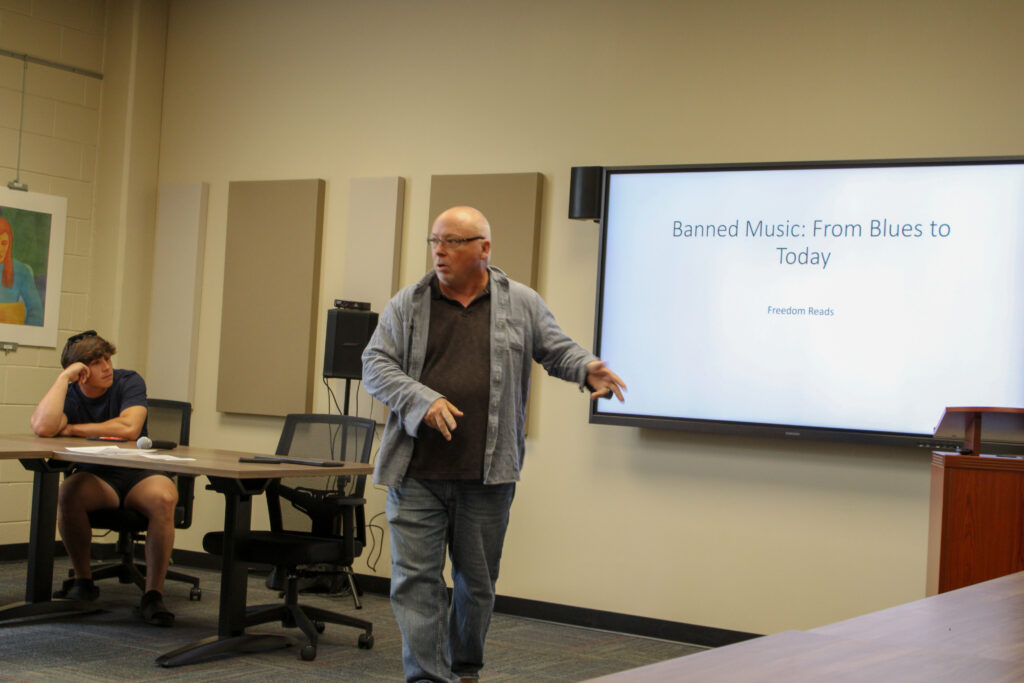
Powell began with a review of the first widely censored music genre: blues music. He noted that “blues music was often excluded from radio play, and when it was allowed, it was often edited to take out possibly offensive lyrics.”
Powell continued that blues music was often limited in where it could be played due to it crossing racial boundaries, especially in the early 20th century. Despite these attempts to censor the music, Powell denoted its legacy as bigger than any bigoted attempts to censor it.
“There is no modern music without the blues. Blues informs R & B, soul, rock and roll, and almost everything you hear today,” he said.
Jazz music, which was born out of blues culture, continued to become the banned music of the next generation. Similar to blues, Powell noted that it was disliked for its crossing of racial lines at a time when music institutions were historically segregated.
However, unlike blues, jazz was able to join what Powell defines as America’s first counterculture.
“There is a commonality among youth cultures around the world: you have to be able to dance to it and mom and dad have to not like it,” he said. Jazz fit both of these parameters in the Roaring Twenties, historically cementing it as a censor-resistant form of music.
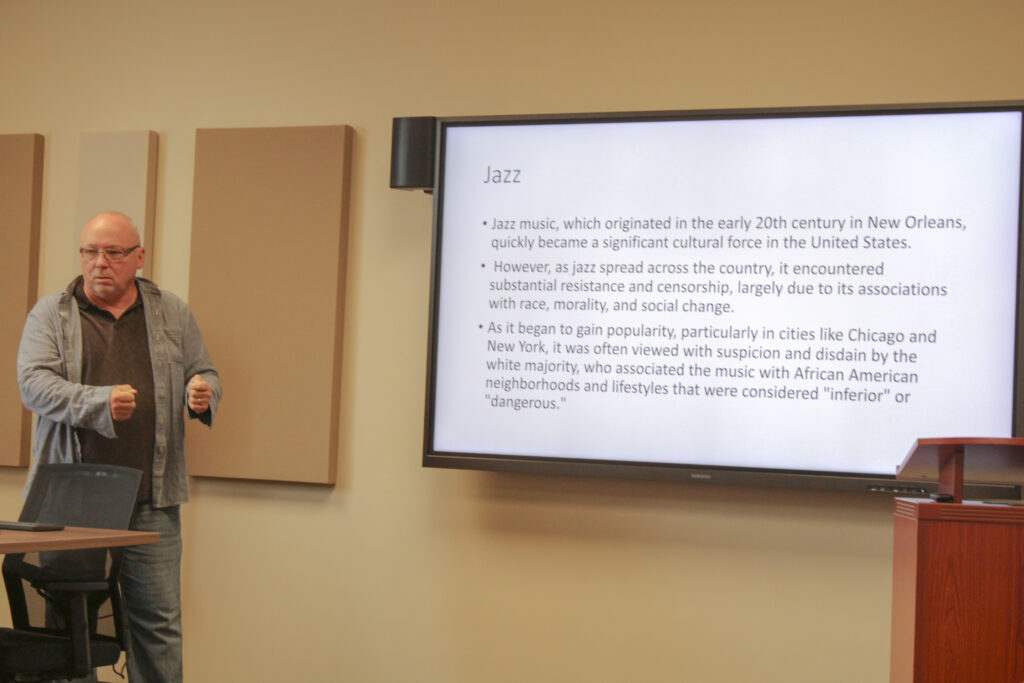
After jazz, Powell said that rock & roll music became the next censored music. Like its predecessors, rock would be described as “the devil’s music” and face radio restrictions and pushback from historical cultural powers.
As rock music was a “fusion of cultures” in terms of musical style and dance, the genre was widely regarded in the 1950s as supporting a deterioration of morals. Figures like Elvis and his explosive popularity would go on to counteract this censorship, but would face further restrictions.
Elvis “was seen as a threat to traditional values, and he was not allowed to perform in certain places,” said Powell. In some cases, Elvis was only allowed to perform if he limited his movements to an approved list by the venue.
Following rock, psychedelic music would face censorship as it was viewed to be promoting drug use, promiscuity, and anti-American values. This genre of music would go on to form a counterculture all to its own known as the Hippie Movement.
“The whole point of psychedelic music is to recreate acid trips, so of course there was significant push-back to it,” said Powell. However, due to the prominence of its counterculture, psychedelic music would fight back against censorship and remain notable to this day.
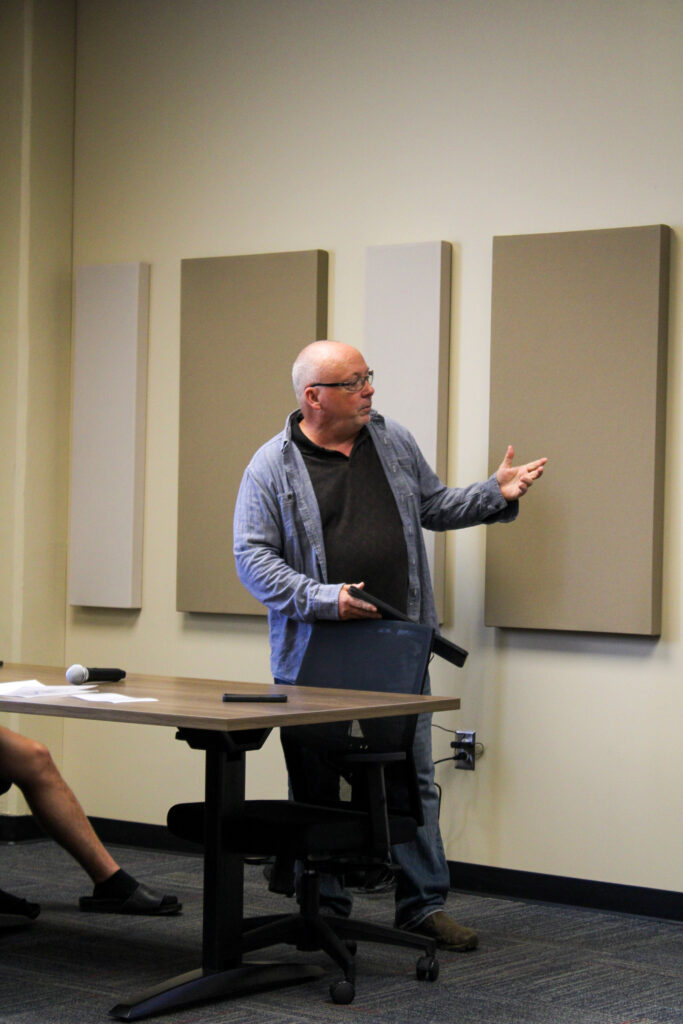
Following this review, Powell took time to explain the beginning of legal censorship in the United States at the hands of the Federal Communications Commission. Beginning in the 1960s, the FCC would create standards of obscenity and indecency that limited what could be played in certain hours.
The FCC defined obscenity as any “material taken as appealing to prurient interest,” restricting all sexual content on public radio broadcasts.
The enforcement of this is largely complaint driven and through hefty fines, although limited exceptions exist for music with a “serious literary, artistic, political or scientific value,” said Powell.
The FCC further defined indecency as any material containing “sexual or excretory references that are widely considered offensive.” This is similarly enforced, but music considered indecent is allowed to be aired between the safe-harbor hours of 10 p.m. and 6 a.m.
Outside of the FCC, censorship would also be driven by the explicit content stickers advocated for by the Parents Music Resource Center. Any music about “violence, sex, drug use, and satanism” would ultimately receive an explicit content sticker beginning in 1990.
Today, Powell noted that the artists who receive these designations and stickers are the subject of much debate. With the rise of hip-hop music and the cultural revolution that came with it, many felt that the process of who was given these designations was influenced and remains influenced by racial boundaries.
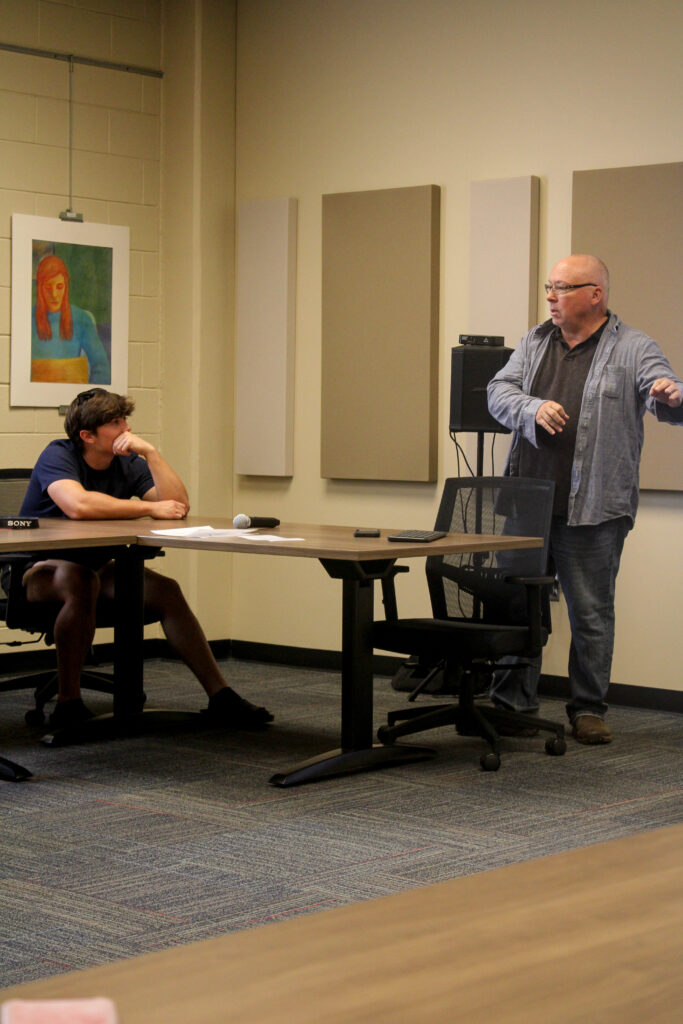
In the modern streaming age, Powell notes that most censorship comes in the form of “decentralized, algorithm-driven censoring.”
Platforms like Spotify and YouTube ultimately decide what gets pushed to audiences based on their algorithms, which demonetize and discourage content that does not adhere to certain acceptance standards. Powell argues that, in a world where anyone can be a musician, these algorithms determine who gets heard and who gets censored.
Despite this new generation of censorship, Powell also notes that many more artists of diverse backgrounds, which in the past would be censored, are getting heard and becoming big commercially.
He noted Chappell Roan, who recently won Best New Artist at the MTV Video Music Awards, as an example. Roan openly identifies as a lesbian and writes about queer experiences, issues, and joy prominently in her music.
In concluding his session, Powell took questions from the audience about censorship and how it has changed over time. He also answered questions about modern artists and how examples of censorship have affected them.
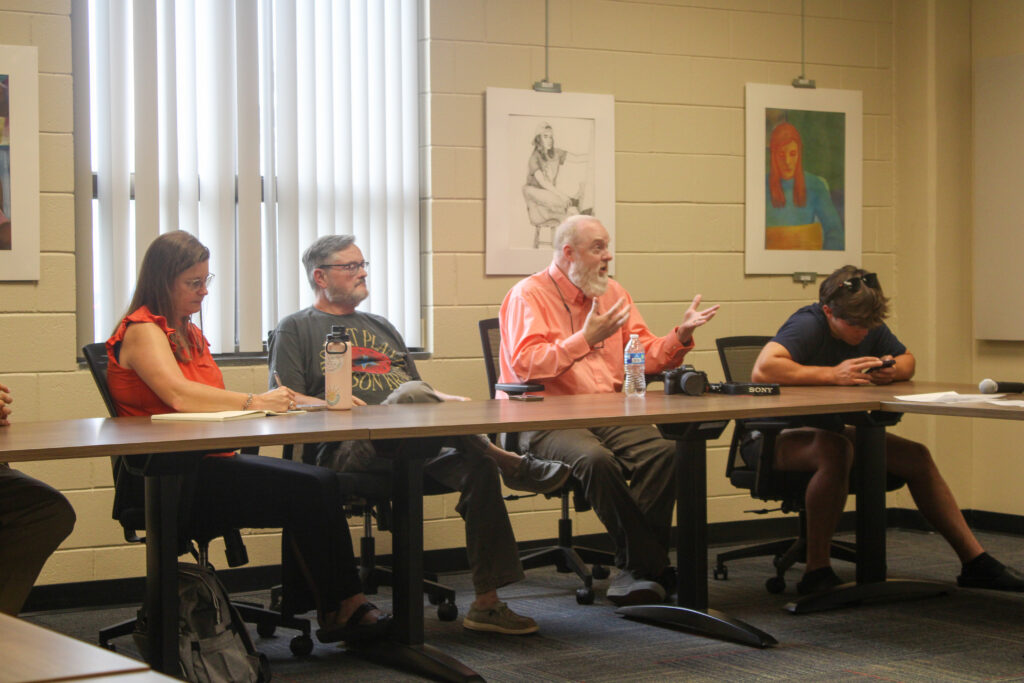
For more about music censorship and how it has historically changed, inquiries can be made to Powell at gjpowell@gardner-webb.edu.
